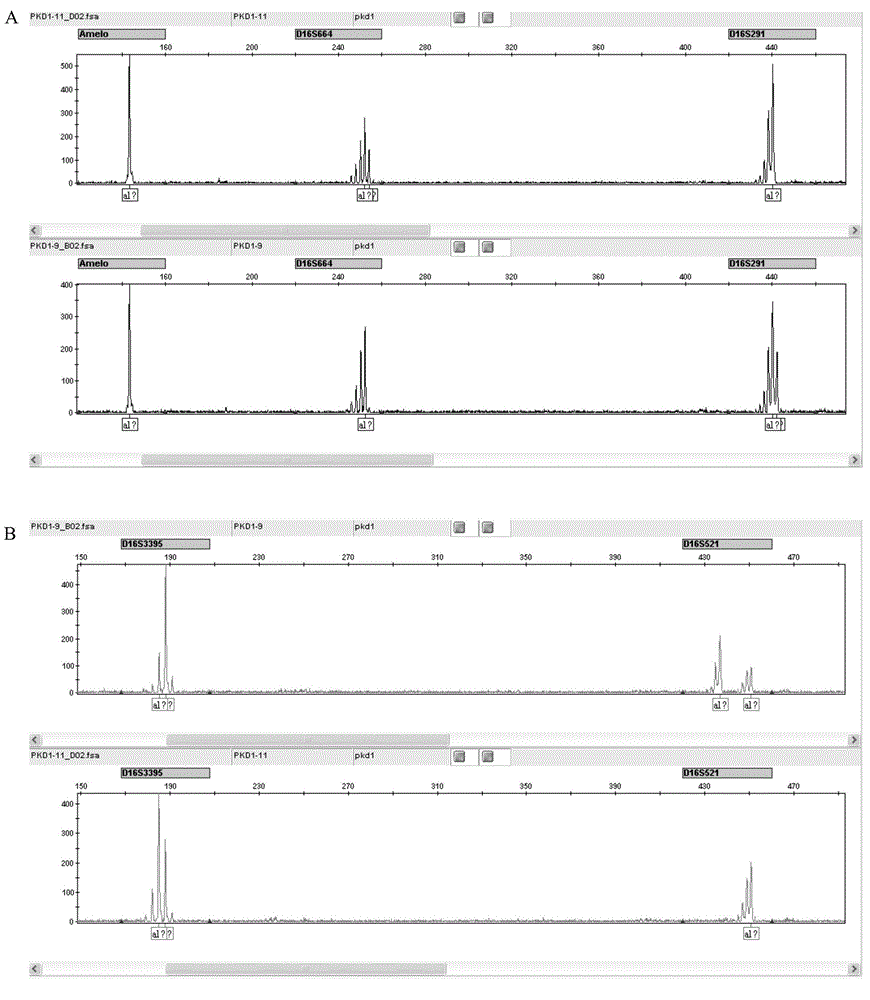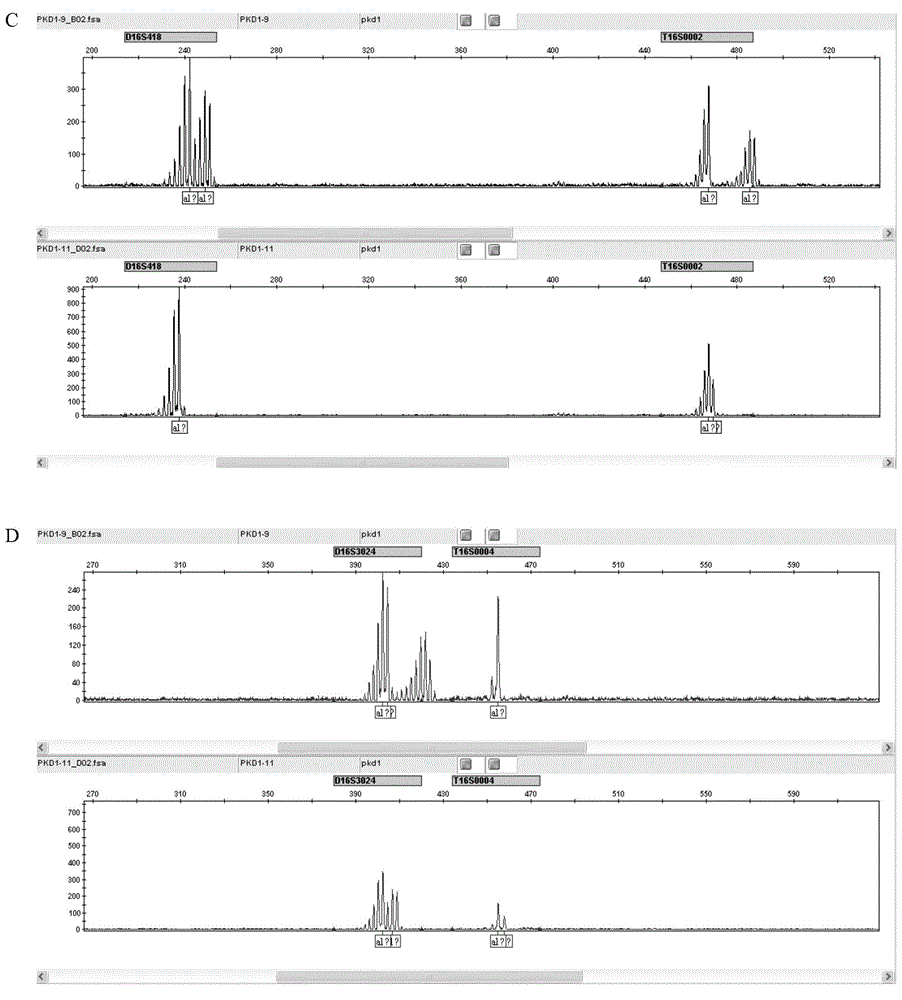STR locus of PKD1 gene and application thereof
A locus and gene technology, applied in the field of clinical molecular diagnosis, can solve the problems of low detection efficiency, long distance, low heterozygosity, etc., and achieve the effect of good compatibility and rich selection range
- Summary
- Abstract
- Description
- Claims
- Application Information
AI Technical Summary
Problems solved by technology
Method used
Image
Examples
Embodiment 1
[0033] Example 1 Screening out 2 new STR sites of PKD1 gene
[0034] 1. STR prediction
[0035] (1) Use the biological public database to check and organize STR information (database refers to NCBI http: / / www.ncbi.nlm.nih.gov / database before November 2011), and obtain NCBI reported STR information;
[0036] (2) Bioinformatics predicts STR, and obtains several loci with repeating unit 2bp repeating times more than 10 times;
[0037] (3) Compare the number of repetitions of these STR sites in the three genomes (refercese, HuRef, Celera) in the NCBI database, and obtain information on STR sites with large differences in the number of repetitions;
[0038] (4) Combining literature, biological databases and bioinformatics predictions, according to the sequence characteristics of actual STRs, two STRs predicted by bioinformatics were screened out and named as T16S0002 and T16S0004. The STR site sequence of T16S0002 is shown in SEQ ID NO.1, and the STR site sequence of T16S0004 is ...
Embodiment 2
[0041] Example 2 STR new site sample verification
[0042] The newly screened 2 STR loci (T16S0002, T16S0004) were combined with 7 commonly used gene loci D16S521 (SEQ ID NO.3), D16S3024 (SEQ ID NO.4), D16S3395 (SEQ ID NO.5), D16S291 (SEQ ID NO.6), D16S664 (SEQ ID NO.7), D16S418 (SEQ ID NO.8), Amelogenin (Amelo X: SEQ ID NO.9; Amelo Y: SEQ ID NO.10) combination, using two Two individual samples were detected by one-step multiplex fluorescent PCR technology.
[0043] The specific experimental steps are as follows:
[0044] (1) DNA sample preparation
[0045] Blood was collected from two selected sample individuals in the hospital; the DNA samples were extracted through DNA extraction kits, and 1 μl of 1% agarose electrophoresis was taken for quality inspection and concentration estimation of the samples, and then the samples were diluted to The working concentration is 5-10ng / μl.
[0046] (2) PCR reaction
[0047] Take 1ul samples for PCR reaction.
[0048] The total volu...
PUM
 Login to View More
Login to View More Abstract
Description
Claims
Application Information
 Login to View More
Login to View More - Generate Ideas
- Intellectual Property
- Life Sciences
- Materials
- Tech Scout
- Unparalleled Data Quality
- Higher Quality Content
- 60% Fewer Hallucinations
Browse by: Latest US Patents, China's latest patents, Technical Efficacy Thesaurus, Application Domain, Technology Topic, Popular Technical Reports.
© 2025 PatSnap. All rights reserved.Legal|Privacy policy|Modern Slavery Act Transparency Statement|Sitemap|About US| Contact US: help@patsnap.com



